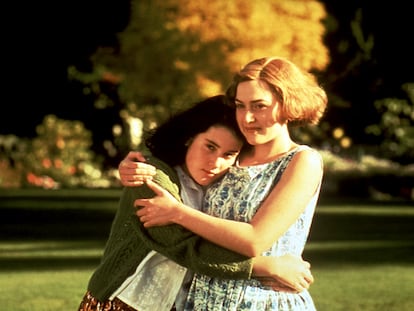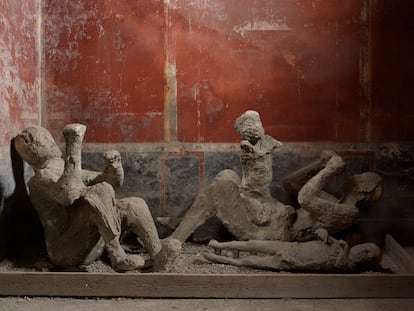From the Fool to the World: The cultural about-face of tarot, beyond psychics and fortune-telling
An exhibition and several books explore the links between the mysterious deck of cards created in the Italian Renaissance with history, art and creativity
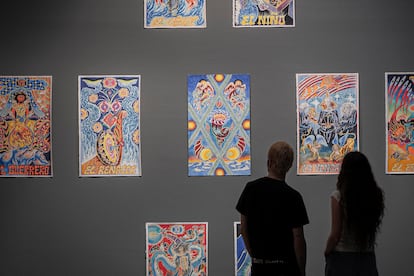

It’s possible to approach the tarot from a variety of directions — three, perhaps. There are those who seek out card readers in person or via late-night television in order to ask them about their future prospects in health, money, and love. There are those who use the deck as a path to self-understanding or creativity, passing the ambiguity of its symbology through the filter of their own psyche not so much to guess the future as to understand the present. And then there are those who are simply attracted by the legendary cards’ aesthetic, historic, and even scientific legacy. Today, a plethora of cultural projects are diving into one form or another of tarot fascination, the mystery and beauty of the Fool, the Devil, the Hanged Man, the Eighth Arcana and the nameless, scythe-wielding skeleton known as Death.
Tarot was created in northern Italy during the Renaissance era. “Its imaginary comes from parades of coaches, surrounded by musicians and set pieces and what were called triumphs, allegorical representations of virtues,” says Pilar Soler, curator of the exhibition La torre invertida: El tarot como forma y símbolo (The reversed tower: Tarot as shape and symbol) at Madrid’s Casa Encendida cultural center. The show explores the deck’s relationship with contemporary art. In fact, in the beginning, it was called the deck of triumphs, which explains the origin of the Temperance, Justice and Strength cards. These virtues are joined by other elements, like period authorities, e.g. the Hierophant, the High Priestess, the King and the Emperor, as well as archetypes like the Fool, the Magician, the World and various figures from astrology and Neo-platonism.
The tarot may be understood as a hero’s journey. It narrates an adventure that begins with its first card, the Fool, and ends with its last, the World. It can be interpreted as a path of initiation, a vital journey, the ascent of the soul to merge with the One (a true Neo-platonic vision). Unlike the hero’s journey in the work of mythologist Joseph Campbell (à la Gilgamesh, Ulysses and Luke Skywalker), the Fool does not return home. But both cases are composed of a process of self-knowledge and transformation, an allegory of the human experience.
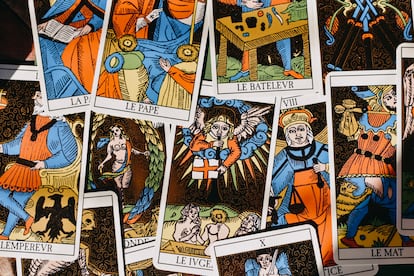
It is not entirely clear to what end tarot was used in its early days — it could have been designed as a game or a dowry gift. The latter was the case of one of the oldest decks, the 15th-century Italian Visconti-Sforza, which was created to honor the influential families for whom it was named and which it joined in matrimony, beautifully illustrated by artists like Bonifacio Bembo. In his recent book Tarot: Significado e historia (Tarot: Meaning and history; with a prologue by Guillermo Solana, director of the Thyssen Museum), expert Pedro Ortega Ventureira traces a line from that tarot to modern times, including notable decks like the Mantegna, the Sola-Busca, the Rider-Waite-Smith and the Thoth, which was designed by polemic occultist Aleister Crowley, considered by some to be the father of modern Satanism. Each has its distinct artistic and symbolic characteristics. The Marseille deck has become canon, the one that comes to mind when we speak of tarot: its first version is from 1672, though it was more properly established by a Parisian playing card company Grimaud reprint in 1930.
“The tarot deck is a colossal object, the study of which encompasses numerous disciplines, both esoteric and exoteric,” says Ortega. Its esoteric use gained prominence in the 18th century, coinciding with a rise of occultisum, and then again in the 20th century among circles like Madame Blavatsky’s Theosophical Society and the Hermetic Order of the Golden Dawn. “That was the era of Egyptomania and people began to speculate, lacking any documentary evidence, about the origin of tarot having taken place in Ancient Egypt, linking it to mystical and archetypal wisdoms,” says Ortega. And so, the deck became a tool for occultism in the hands of magicians and initiates like Gébelin, Eliphas Levi and Papus, who blended its use with alchemy and hermeticism.
Tarot today
In contemporary times, tarot is commonly used not for fortune-telling, but as a tool of self-understanding. One of the great modern tarot readers is the multifaceted Alejandro Jodorowsky. “He is the great Spanish-speaking tarotologist,” Ortega says. “He arrived at it through the influence of surrealist painter Leonora Carrington, who also created her own tarot, and used it in psychomagic practices.” The Chilean Jodorowsky adopted the Marseilles tarot, influenced by the surrealist high priest André Breton, and restored it in collaboration with master card-maker Philipe Camoin using its original colors, in search of the deck’s true essence.
Ortega’s account ends by exploring some of the tarots that have been more recently developed by Salvador Dalí and H.R. Giger, the Basque and Catalonian tarots, Milo Manara’s erotic version, the Stardust Tarot, featuring representations of David Bowie, the Satanic Tarot, and the deck by the creator of Sherlock Holmes, Arthur Conan Doyle. Today, the offerings of tarot are vast, with many decks based on the Marseille with purely commercial intent. There’s a fairy deck, a Lord of the Rings deck, one inspired on the DC Comics universe, and another by Star Wars. Tarot is now a business.

In the second half of the 20th century, tarot attracted the attention of vanguard artists who were traversing the era’s underground and countercultural currents. Here is where La torre invertida picks up, highlighting period works inspired by the deck from the likes of Agnès Varda, Andy Warhol, Betye Saar, Dorothy Iannone and Niki de Saint Phalle. “The tarot is a game that is like a labyrinthine book in which fate intervenes, with a plethora of ways to tell the tale, that should be read from the image to the word,” says Soler. “It gives artists a resource in retaking symbology, but it’s also familiar to the public, because it’s in the collective imaginary.”
In the show, 12 artists approach the deck in different ways, above all reinterpreting it, as does Aldo Urbano, who blends it with his interior obsessions; Susanne Treister, who fills it with counterculture references like Aldous Huxley and Timothy Leary and liminal leanings like transhumanism and cybernetics. King Khan and Michael Earon create a deck of great Black musicians: the Black Power Tarot. Among its major arcanas are Nina Simone, Howlin’ Wolf, Tupac, and Curtis Mayfield.
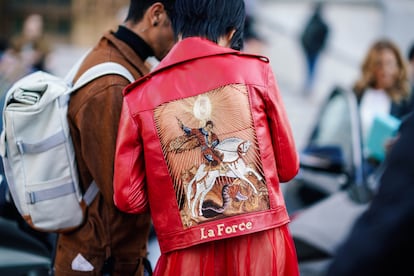
Writer Jessa Crispin utilizes tarot as a form of self-understanding but, above all, fertile ground for creativity, according to her Spanish language book El tarot creative: Una guía moderna para una vida inspirada (The creative tarot: A modern guide for an inspired life). In it, she explains how to use the deck to get started on a painting or written piece, to overcome a creative block, in presenting oneself to the world and in setting off down new paths, creating something out of the norm. Authors like Italo Calvino, composers like John Cage and the aforementioned Jodorowsky have used tarot cards to unlock their creativity. With frequent use of the deck, Crispin writes, its connections to the surrounding world will become ever clearer. “You’ll be reading a book or watching a movie and archetypes will start appearing to you. From a creative standpoint, the tarot is an unlimited resource that never runs out.”
A less-explored relationship is that of tarot and science. Bioengineer Guglielmo Foffani has traversed this territory. Once on a shamanic retreat, he experienced an “epiphanic moment”: “I realized that the tarot cards correspond, in a very natural way, with the different steps of the scientific method,” he relates. He writes of the occasion in his Spanish language book Tarot y ciencia: Un improbable paralelismo mitológico (Tarot and science: An improbable mythological parallel). Here, the journey from Fool to World is the well-worn archetype that a scientist enacts in his daily research, a parallel that the author considers “improbable,” but a beautiful “creative analogy.” Here, the Eighth Arcana represents the destruction of dogmas, the Magician embodies instrumental techniques, the Hanged Man, doubt, and the Devil, the passion of those who investigate in nature. The Fool, of course, is the scientist and the World, the ultimate achievement of research. “The tarot represents the mythology of the scientific method,” concludes the author. And just as, according to Carl Jung, all mythology embodies the collective unconscious of a culture, the tarot represents the collective unconscious of scientific culture.
Scientific or not, the tarot and other similar disciplines are undergoing a boom in popularity. There is a new interest among younger generations in spells and horoscopes, and according to a study by the Springtide Research Institute, 51% of Gen Z has an interest in tarot and fortune-telling. One explanation for this surge in esoteric pursuits is the abolishment of the future. When what comes next is unclear, we need our futures read. “I think that there are people who have the ability to read tarot and see things that others don’t, accessing knowledge in an intuitive way. But there’s a large quantity of people who use it to make money from people who have problems,” says Ortega. “Those are the ones sullying the name of tarot.”
Sign up for our weekly newsletter to get more English-language news coverage from EL PAÍS USA Edition
Tu suscripción se está usando en otro dispositivo
¿Quieres añadir otro usuario a tu suscripción?
Si continúas leyendo en este dispositivo, no se podrá leer en el otro.
FlechaTu suscripción se está usando en otro dispositivo y solo puedes acceder a EL PAÍS desde un dispositivo a la vez.
Si quieres compartir tu cuenta, cambia tu suscripción a la modalidad Premium, así podrás añadir otro usuario. Cada uno accederá con su propia cuenta de email, lo que os permitirá personalizar vuestra experiencia en EL PAÍS.
¿Tienes una suscripción de empresa? Accede aquí para contratar más cuentas.
En el caso de no saber quién está usando tu cuenta, te recomendamos cambiar tu contraseña aquí.
Si decides continuar compartiendo tu cuenta, este mensaje se mostrará en tu dispositivo y en el de la otra persona que está usando tu cuenta de forma indefinida, afectando a tu experiencia de lectura. Puedes consultar aquí los términos y condiciones de la suscripción digital.
More information
Archived In
Últimas noticias
Kate Winslet makes her directorial debut: ‘There aren’t more female directors because we’re busy raising children’
ChatGPT fails the test: This is how it endangers the lives of minors
The late consecration of women artists in their 90s
The Florida Keys tourist paradise is besieged by immigration agents: ‘We’ve never seen anything like this’
Most viewed
- Families demand repatriation of bodies of Colombians who died in Ukraine: ‘This war is a slaughterhouse for foreigners’
- The low-cost creative revolution: How technology is making art accessible to everyone
- Liset Menéndez de la Prida, neuroscientist: ‘It’s not normal to constantly seek pleasure; it’s important to be bored, to be calm’
- Christian Louboutin: ‘Young people don’t want to be like their parents. And if their parents wear sneakers, they’re going to look for something else’
- ‘El Limones’ and the growing union disguise of Mexican organized crime
